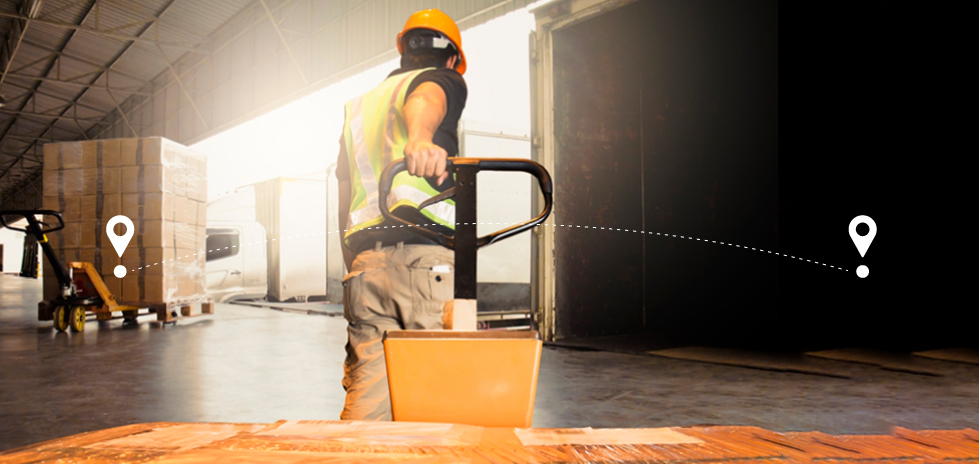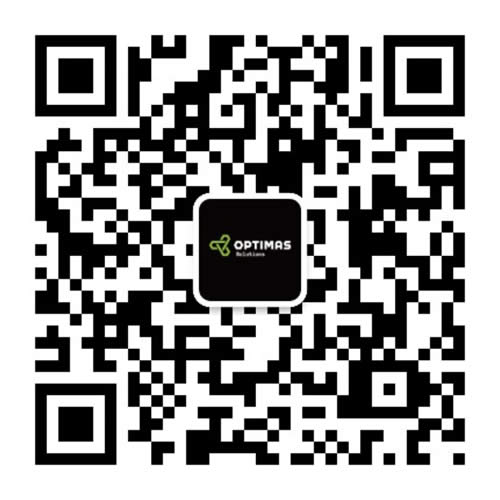
Asegurando su cadena de suministro durante COVID-19 y más allá
A medida que avanzamos más allá de la mitad de 2020, le preguntamos a Marc Strandquist, presidente de las Américas de Optimas, sobre el estado actual de las cadenas de suministro, lo que hemos aprendido hasta ahora y cómo asegurar su cadena de suministro para el futuro.
¿Cuál es el mayor desafío para los fabricantes en este momento?
La respuesta corta es comprender la verdadera demanda. En enero, vimos que los clientes construían, digamos, 200 unidades por día y luego se cerraron en abril. Cuando los fabricantes reabrieron y comenzaron a aumentar la producción, comenzaron con unas 50 unidades por día. Esto es significativamente menor que donde estaban seis meses antes, y muchos estaban haciendo su mejor estimación de los números. Es difícil proyectar y ajustar la producción, especialmente en un mercado tan volátil.
Más arriba de los fabricantes están los proveedores de materiales. La industria del acero, por ejemplo, ha tenido que ajustar la producción para tratar de evitar el aumento de los inventarios y la disminución de los precios causados por el estancamiento y la reducción de la producción aguas abajo.
Todos esperamos y rezamos para que si hay un segundo aumento nacional del virus, las cosas se manejen de manera diferente y encontremos mejores formas de proteger nuestra economía en lugar de cerrar todo y comenzar este ciclo nuevamente.
¿Cuáles son algunos de los otros desafíos con los que ha visto que luchan los fabricantes?
Muchos proveedores están declarando fuerza mayor o quebrando, dejando a los distribuidores y fabricantes varados, causando una gran interrupción en la cadena de suministro.
La industria industrial también ha tenido que lidiar con movilidad limitada y restricciones de viaje. No pueden visitar a los clientes, reunirse con cuentas clave y perjudicar las relaciones con los clientes.
Y, por supuesto, algunas empresas tienen problemas con el flujo de caja.
Algunas empresas estaban mejor preparadas que otras para manejar esta crisis. ¿Qué hicieron bien esas empresas?
Creo que tomaron una postura muy agresiva en la comunicación con sus clientes y proveedores. Se aseguraron de proporcionar actualizaciones constantes y registros que brindaron una sensación de comodidad.
Además, las empresas que aprovecharon la tecnología, digitalizando la mayor parte posible de su cadena de suministro, tenían los datos correctos, lo que resultó en una mejor planificación de la demanda para aplazamientos y cancelaciones que expulsan el inventario, por lo que podían tener suficiente efectivo disponible.
¿Qué pasa con aquellos que fueron atrapados con la guardia baja?
La comunicación es tan importante. Las empresas que no se comunicaron por adelantado y de manera efectiva con los clientes y socios proveedores tuvieron más dificultades. No podían reaccionar apropiadamente o lo suficientemente rápido. Como todos hemos presenciado recientemente, un cierre nos deja vulnerables y expuestos. Una comunicación clara y transparente permite mitigar mejor el riesgo.
Y, por lo que hemos visto hasta ahora de la pandemia de 2020, las cadenas de suministro basadas principalmente en un bajo costo, una sola fuente y un inventario bajo fueron las menos equipadas para lidiar con interrupciones tan masivas.
Finalmente, creo que no tener relaciones sólidas con los proveedores y socios de la cadena de suministro correctos perjudica a muchas empresas.
¿Cuáles fueron algunas de las cosas que vio que los fabricantes estaban haciendo para corregir el rumbo y estabilizarse?
Las empresas con estrategias adecuadas de mitigación de riesgos, abastecimiento diverso, digitalización y relaciones sólidas con los proveedores fueron más resistentes.
Las empresas que han comenzado a diversificar sus cadenas de suministro e implementaron una estrategia de cadena de suministro en tierra, invirtiendo en la fabricación nacional, han reducido su riesgo considerablemente.
Y la buena noticia es que la fabricación estadounidense se beneficiará enormemente de esto.
En Optimas, por ejemplo, realizamos una fabricación de gran volumen y alta calidad en nuestras instalaciones del área de Chicago. Estamos viendo un aumento en el interés en el abastecimiento nacional frente al extranjero.
¿Qué desafíos de la cadena de suministro seguiremos viendo en el cuarto trimestre?
Los desafíos para cualquier empresa y sus líderes serán las cosas que están fuera de su control. Con esto me refiero a más cierres de gobierno a nivel estatal o nacional. Hará que sea imposible planificar el inventario, pronosticar la demanda y ajustar la mano de obra en consecuencia.
¿Qué pueden hacer los fabricantes en este momento para estabilizar su cadena de suministro y minimizar sus riesgos?
Obtén datos precisos de lo que vas a consumir. Eso es #1. Como distribuidor industrial, no tenemos problemas para obtener inventario para nuestros clientes, pero necesitamos buenos datos para garantizar el mayor nivel de servicio posible. Una mayor visibilidad es clave.
¿Qué soluciones a largo plazo se necesitan para continuar asegurando sus cadenas de suministro?
Cada empresa debe realizar una revisión muy exhaustiva de su base de suministro y estrategia de productos básicos. Asegúrese de celebrar acuerdos con proveedores que sean estables, financieramente viables y que tengan la capacidad disponible para entregar. Volviendo a lo que dije antes, la comunicación y las relaciones transparentes son fundamentales.
¿Cómo podrían cambiar para siempre las cadenas de suministro por el COVID-19?
No hay duda de que habrá una forma completamente nueva de hacer negocios. Habrá menos contacto humano, más reuniones de Zoom/Teams y probablemente también más restricciones en los viajes. Estas cosas estarán con nosotros durante mucho tiempo. Pero es una oportunidad para que todos seamos creativos en la forma en que interactuamos y llegamos a nuestros clientes para ayudarlos a lograr sus objetivos comerciales.
También anticipo un interés continuo en la fabricación nacional. Los fabricantes buscan reducir su costo total de propiedad, así como también recibir un mejor soporte para su propia producción y sus clientes.
¿Cómo será el rebote a medida que salgamos del COVID-19?
Aquellos que se tomaron este tiempo para enfocarse internamente en el negocio, capacitar a su gente y fortalecer sus empresas serán los que puedan salir y obtener una parte del mercado. Aquellos que fueron pasivos y perdieron el tiempo se quedarán atrás, grandes o pequeños. Habrá mucho comportamiento agresivo para lograr penetración en el mercado.
En Optimas hemos estado bastante ocupados los últimos cinco meses. Estamos mejor preparados para ganar participación de mercado y crecer porque hemos estado invirtiendo en actualizaciones tecnológicas, expandiéndonos a nuevos mercados y agregando una nueva variedad de productos para nuestros clientes.
¿Qué es algo que ha aprendido como líder durante este tiempo?
Tuve que cambiar mi forma de pensar acerca de trabajar desde casa. No era fanático del concepto antes del virus. Pensé que degradaría el negocio o sería demasiado difícil. Las desventajas son que pierdes un poco de camaradería en el equipo y la cultura de la empresa se resiente cuando eres todo remoto. Terminó siendo una transición perfecta. Nos aseguramos de que nuestra gente tuviera acceso a lo que necesitaban para que pudieran continuar haciendo su trabajo.
¿Cómo podemos estar preparados para lo que sigue?
Asegúrese de que su equipo entienda que su cliente no quiere que le vendan en este momento; quiere respuestas y ayuda para averiguar qué sigue. Responda rápidamente a las necesidades de los clientes y asegúrese de que su gente esté debidamente dirigida y capacitada para trabajar en las condiciones actuales. Habrá oportunidades, pero debe estar debidamente preparado y ser flexible.
2 Comments
Deja un comentario
Debe estar log in para publicar un comentario.







[…] COVID-19 ha sacudido nuestra salud pública, nuestra economía y las finanzas de las empresas. Con tanto en juego, todos somos tan buenos como el socio que está a nuestro lado en este momento. Encontrar las asociaciones adecuadas para la cadena de suministro industrial es clave para sobrevivir a la pandemia y más allá. […]
[…] En este momento, los fabricantes son más conscientes que nunca de sus cadenas de suministro. Esa conciencia ha planteado muchas preguntas sobre cómo mejorar la eficiencia y la resiliencia. He pasado casi tres décadas como profesional de la cadena de suministro y distribución, por lo que entiendo los desafíos de equilibrar la continuidad del suministro con la demanda de los clientes. Los gerentes de la cadena de suministro están atravesando una mayor complejidad a medida que COVID-19 ha expuesto vulnerabilidades incluso en las cadenas de suministro más seguras. Saber cómo simplificar áreas complejas y estabilizar los vínculos débiles le permitirá ampliar o reducir rápidamente a medida que evoluciona la demanda. A continuación se presentan algunos consejos permanentes para optimizar la gestión de piezas y lograr una cadena de suministro más sólida y resiliente. […]